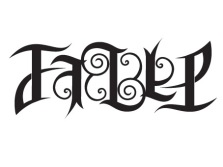 When I learned a month or so ago that someone had actually organized a World Storytelling Day, I grew excited. The official date is March 20, but storytellers are welcome to celebrate the art anytime. Even before my discovery, I had been thinking about making more use of stories in my online lessons. Short stories have helped me contextualize target language in a number of my past YT videos, from grammar to vocabulary. I've also used short narratives for pronunciation practice.
When I learned a month or so ago that someone had actually organized a World Storytelling Day, I grew excited. The official date is March 20, but storytellers are welcome to celebrate the art anytime. Even before my discovery, I had been thinking about making more use of stories in my online lessons. Short stories have helped me contextualize target language in a number of my past YT videos, from grammar to vocabulary. I've also used short narratives for pronunciation practice.
Well, the creative bug bit me again, so another story is on its way! Please stay tuned for a special ESL storytelling event that a few colleagues and I have planned for next week.
Don't miss out on the fun of doing something yourself. What can you plan for the week of March 20? I'd like to offer some ideas this week and next. Today let's consider the possibles ways of working with fables.
Fables are conveniently limited to a short amount of text, which makes it possible to read the story a few times within a lesson. There are a number of collections online. A common choice would be Aesop's Fables. Depending on the level of the students, you could consider modifying the text, replacing some of the less common or bookish words with high frequency words to make the text more accessible. For example, you might replace filberts with hazelnuts or simply nuts in The Boy & the Filberts.
1. Completing a gapped exercise and making student recordings were mentioned in an old post of mine. Some online collections have audio recordings available. You could, of course, read the text yourself for a gapped text. Alternatively, if you chose two short fables, partners could take turns reading aloud for the other to complete a partial dictation.
2. Moral matching is also possible with short fables. The basic idea is for students to match the moral to the story. Suggestion:
- Choose three short fables. Make copies, but omit the morals in the texts.
- Distribute a copy of each text to three small groups. Each group will have a different story to read. Have one person in the group read the story aloud.
- Write the possible morals on the board. You can challenge students by including one moral that doesn't match any of the stories. Let the groups decide on the best match.
- Have students partner up with someone from a different group. Each partner will retell his/her story and include the moral. They can exchange partners twice, so that they hear all three stories and have the chance to tell their fable twice.
3. Humanizing and modernizing the fable. Choose a fable for students to retell using human characters and encourage them to set the story in modern times. Students can write their new stories and then share them. The Young Crab & His Mother is one fable that lends itself to this task.
It so happens that this year's theme of World Storytelling Day 2016 is strong women. If a fable already has human characters, students can update it and make sure a strong woman is part of the plot. This task could work with The Bundle of Sticks.
Happy World Storytelling Day!
Art credit: Fable Ambigram (May 2007) by Jamie Durrant. Retrieved from the Creative Commons on Flickr.
 When I learned a month or so ago that someone had actually organized a
When I learned a month or so ago that someone had actually organized a
No comments:
Post a Comment